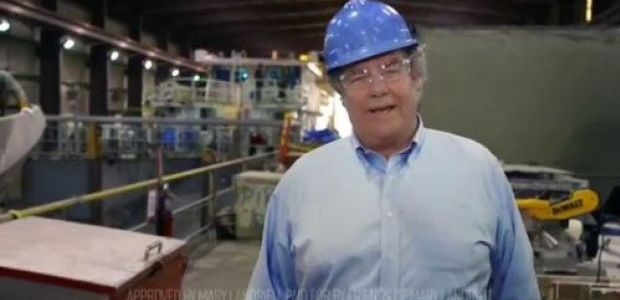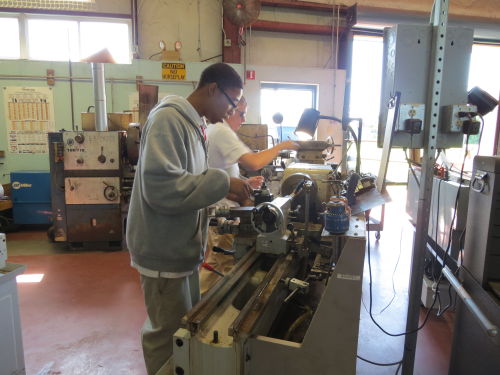
What does Landrieu’s chair seat mean for La.?
May 21, 2014
GLPC tapped a coastal steward
May 21, 2014Located at the site of Houma’s old radar base, Terrebonne Career and Technical High School’s faculty and students regard the school as one of Houma’s hidden gems of academic excellence.
The buildings once occupied by the Houma Air Force Station now cater to unique curriculum such as diesel technology, industrial machine, outdoor power equipment technology and welding.
As the demand for a skilled workforce continues to grow, the career and technical high school is expanding programs and welcoming more students interested in preparing for high wage, high demand jobs.
Starting this fall, Terrebonne Career and Technical High School will offer students more oil and gas industry-based curriculum, which will allow students to obtain credentials from the American Petroleum Institute.
While higher education has noticed the importance of fostering workforce demand, secondary education is also following that trend by offering curriculum to 11th- and 12th-grade high school students based on their decisions to follow the college or career track.
Students interested in the career track who attend Terrebonne’s Career and Technical High School can earn a new oil and gas certificate, in addition to the school’s 21 industry-based certifications.
William Simmons, the technical school’s principal, said the industry certificates motivate students to go further in their specific certification field.
“The idea now is to make sure students are prepared before they graduate,” he said. “If they graduate high school with a certificate, they still have the opportunity to go to college and get further training.”
Graham Douglas, secondary and vocational education supervisor for the Terrebonne Parish School Board, said the career track represents the state’s future, which anticipates 80,000 new jobs to be created in the near future.
“It aligns with the demand we have here in Louisiana,” Douglas said. Marine and oil-and-gas industries have been clamoring for qualified welders, fitters and integrated production workers in recent years. “The new diploma will focus on careers, credentials and industry-based certifications.”
Students will have to make a choice between the Core 4 University Track, which follows the TOPS curriculum, and the career diploma track, which is geared toward graduating workforce-ready workers, after their sophomore year of high school.
The new industry certification making its way to Terrebonne has been in action for two years in Lafayette, Iberia, St. Martin, St. Mary, St. Landry, Acadia and Evangeline parishes.
Training the oil-and-gas industry for more than 25 years, J. Schneider and Associates in Lafayette has developed the curriculum for the two new courses – basic oil-and-gas production and safety systems.
“It provides them certifications that are required for employment,” said Susan Norris, education coordinator for J. Schneider & Associates.
The certification would be valid for the duration of one year, which is when graduates would have to invest in more training to renew their certificate.
Norris said “the high school students are doing exceptionally well with the material,” citing an 85 percent passing rate.
“The first course provides everything they would ever need to know about oil-and-gas production,” Norris said. “Even if they don’t go work offshore, it’s a good knowledge base for them.”
Douglas said the requirements to graduate high school will remain the same with students needing 23 units to walk across the stage and receive a diploma. “Maybe they will see a decrease in the number of core, academic classes and an increase in the number of career classes.”
Nicol Blanchard, college and career transition coordinator for Fletcher Technical Community College, said enrollment in Fletcher’s technical programs has steady increased in recent years, which aligns with technical high schools’ efforts to enhance readiness.
“We don’t have enough people to fill the jobs that we have. Any student going into a technical program is a big deal because we don’t have enough skilled workforce,” Blanchard said. “With the lowest unemployment in the nation, we have to bring people in. It’s very important for students to look into this option.”
Some of the important curriculum developments stem from coordination between Blanchard, the South Central Industrial Association Workforce Development Committee and industry leaders such as Bollinger Shipyards, Gulf Island Fabrication and Edison Chouest Offshore.
“Our students are really skilled and the employers are working with us to establish partnerships that will get students in these high-wage, high-demand jobs,” Douglas said. “We’re trying to align the careers where the jobs are.”
The impact of these changes will benefit students in their final years of high school, and their transition into the workforce, technical college or university setting.
While students in Steve Crochet’s welding class at the career and technical high school were busy completing their final welding exam, at least five were also preparing for interviews with Gulf Island Fabrication.
By completing the class, which focuses on topics such as shielded metal arch welding and gas metal arch welding, Crochet said students have a job advantage.
“All the certificates do is get them through the door,” he said. “They still have to be able to perform and do the work.”
Terrebonne Career and Technical High School has partnerships within local industry, and Jeremy Boudreaux, who is in charge of diesel technology courses at the school, said he receives a steady number of calls from businesses looking for experienced technicians and entry-level mechanics.
Boudreaux’s diesel courses focus on the marine and transportation industries.
“Being that marine is big down here, we cover all the basics of the engine,” he said. “And when students come back for their second year, we advance what they’ve learned.”
Not only are his students receiving entry-level job offers at $15 to $17 an hour, but some of them have also earned scholarship money in the range of $10,000 to attend Universal Training Institute, which filters students to employers such as NASCAR, Boudreaux said.
Charles Positerry is in charge of the school’s electrical courses, and he anticipates Terrebonne’s technical school to experience rapid growth.
“The industry is paying right now and there are not enough people,” he said. “We want them to be successful and that’s what we’re training them for.”
In recent years, Simmons has worked to change the negative connotation associated with vocational schools and has made it a place for students to gain a competitive edge in the workforce.
“It’s no longer called vo-tech. It had a negative vibe and it was for people who felt they couldn’t make it in regular classes,” Simmons said of the changes. “Students are feeling better about it and are learning how to network in order to be successful in life.”
Students in Aaron Blank’s industrial machine shop class at Terrebonne Career and Technical High School work to turn down pieces of iron. Blank also teaches students how to read and draw blueprints, which helped two of his students gain access to jobs in a machine shop during the semester.












